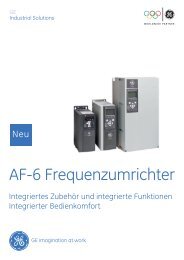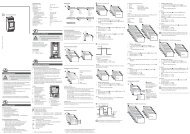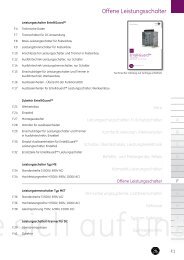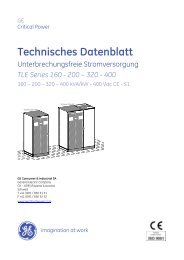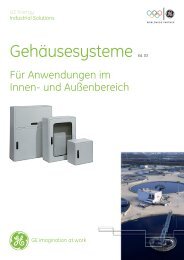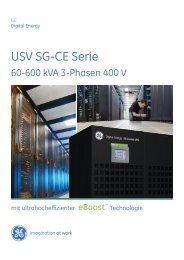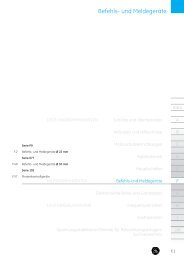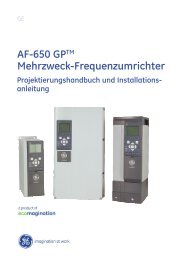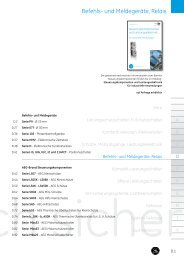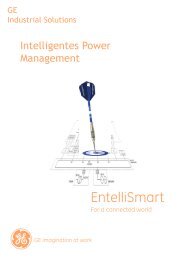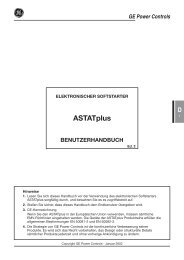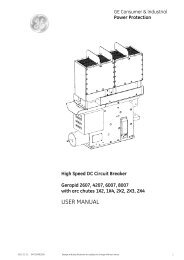Uninterruptible Power Supplies - G E Power Controls
Uninterruptible Power Supplies - G E Power Controls
Uninterruptible Power Supplies - G E Power Controls
You also want an ePaper? Increase the reach of your titles
YUMPU automatically turns print PDFs into web optimized ePapers that Google loves.
UPS<br />
RPA - Redundant Parallel Architecture<br />
The principle<br />
UPS 1<br />
GE provides a unique technology<br />
called Redundant Parallel Architecture<br />
(RPA) that can parallel <strong>Uninterruptible</strong><br />
<strong>Power</strong> Supply (UPS) modules with true<br />
redundancy.<br />
mains<br />
UPS 2<br />
load<br />
With RPA, there is no need for external<br />
electronics or switches to control the<br />
UPS modules in the parallel system.<br />
One of the UPS modules in the system<br />
arbitrarily takes a leadership role, while<br />
the other UPS modules have access to<br />
all control parameters. If one UPS fails<br />
to operate, the load is automatically<br />
redistributed among the others. If<br />
the lead UPS fails to operate then a<br />
different UPS automatically takes on<br />
the leadership role.<br />
RPA<br />
A unique concept<br />
Many other so-called redundant UPS offerings have one critical shortfall, in<br />
that they have critical components that are not redundant. RPA technology<br />
provides complete redundancy of all critical components and there are no<br />
single points of failure. RPA technology allows UPS system expansion not only<br />
to increase capacity but also to improve the reliability of the power provided<br />
to critical loads. For mission critical applications, RPA technology provides true<br />
redundancy for the highest reliability.<br />
The RPA systems are designed to have<br />
no single points of failure, ensuring the<br />
highest level of power protection for<br />
critical loads.<br />
A<br />
B<br />
X<br />
Characteristics<br />
• RPA Configuration provides complete redundancy of all critical components<br />
and allows paralleling of up to four units for increased load capacity. It<br />
ensures excellent dynamic behaviour based on output voltage load sharing.<br />
This provides the highest reliability and availability for mission-critical<br />
applications.<br />
• Modular design allows for system upgrades to meet future power needs<br />
without any interruption to the critical load or transfer to bypass.<br />
• Easy to install and maintain.<br />
• Scaleable design allows for efficient use of capital.<br />
• Peer-to-Peer architecture where any UPS can be the “logic leader” ensuring<br />
no single points of failure.<br />
A.3



